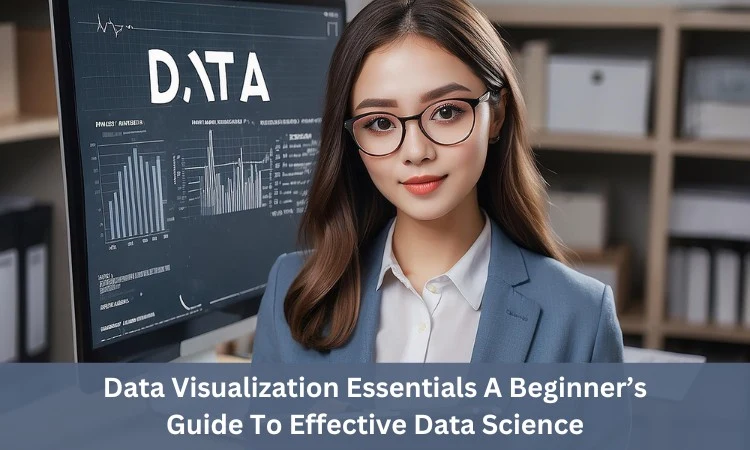In the realm of data science, data visualization is a crucial skill that transforms raw data into understandable and actionable insights. Whether you’re a beginner or looking to refine your skills, understanding the essentials of data visualization can significantly enhance your ability to communicate findings effectively. This guide covers the fundamental concepts and best practices to help you create impactful visualizations.
Why Data Visualization Matters
Data visualization is the process of representing data in graphical or pictorial form. It improves the usability, accessibility, and comprehension of complicated data by:
- Revealing Patterns and Trends: Visual representations can highlight correlations, outliers, and trends that might not be evident in raw data.
- Simplifying Complex Information: Good visualizations distill large amounts of data into a format that is easier to comprehend.
- Facilitating Decision-Making: By presenting data visually, stakeholders can make more informed decisions quickly.
Key Concepts In Data Visualization
1. Types of Data
Understand the different types of data you are working with:
- Categorical Data: Represents distinct categories (e.g., gender, product type).
- Numerical Data: Includes discrete and continuous data (e.g., sales numbers, temperature readings).
2. Visualization Types
Different types of visualizations serve different purposes:
Bar charts are helpful when comparing values between different groups.
Line charts are a great tool for displaying trends over a period of time.
- Pie Diagrams: Excellent for displaying ratios within an entire
- Scatter Plots: Effective for showing relationships between two numerical variables.
- Heatmaps: Excellent for displaying data intensity in two dimensions.
Best Practices For Effective Data Visualization
- Know Your Audience: Tailor your visualizations to meet the needs and understanding of your target audience.
- Choose the Right Chart Type: Match the chart type to the data and the message you want to convey.
- Keep It Simple: Avoid clutter by focusing on the most important data points and minimizing unnecessary elements.
- Use Color Wisely: Use colors to highlight key information but avoid using too many colors, which can be distracting.
- Provide Context: Include titles, labels, and legends to ensure your audience can easily understand what the visualization is depicting.
- Ensure Accuracy: Represent data truthfully and avoid misleading scales or cherry-picking data that skews the interpretation.
Tools For Data Visualization
There are numerous tools available for creating data visualizations, ranging from simple to complex:
- Microsoft Excel: Accessible and user-friendly for basic charts and graphs.
- Tableau: Powerful for creating interactive and sophisticated visualizations.
- ython (Matplotlib, Seaborn): Highly customizable and suitable for those comfortable with programming.
- R (ggplot2): Excellent for creating detailed and publication-quality visualizations.
- Power BI: Useful for business analytics and integrating with various data sources.
Steps To Creating Effective Visualizations
- Define Your Objective: Clearly define what you want to achieve with your visualization. What questions are you trying to answer?
- Collect and Prepare Data: Gather your data and ensure it is clean and organized. Data preparation is crucial for accurate visualizations.
- Choose the Appropriate Visualization: Select the chart type that best represents your data and objectives.
- Design Your Visualization: Create your visualization, paying attention to design principles and best practices.
- Review and Iterate: Test your visualization with a small audience, gather feedback, and make necessary adjustments.
Common Pitfalls To Avoid
- Overcomplicating the Visual: Too much information can overwhelm the viewer. Strive for clarity and simplicity.
- Misleading Visuals: Be mindful of scales and axes to avoid misrepresenting the data.
- Ignoring Accessibility: Ensure that your visualizations are accessible to all users, including those with color blindness or other visual impairments.
- Neglecting Interactivity: Where applicable, incorporate interactive elements that allow users to explore the data further.
Data visualization is a powerful tool in the data scientist’s toolkit. By transforming raw data into visual formats, you can make complex information more accessible and useful. By following best practices, choosing the right tools, and continuously refining your skills, you can create effective visualizations that drive informed decision-making and communicate your findings with impact. Whether you’re just starting out or looking to enhance your data visualization capabilities, mastering these essentials is a critical step toward becoming a proficient data scientist.

